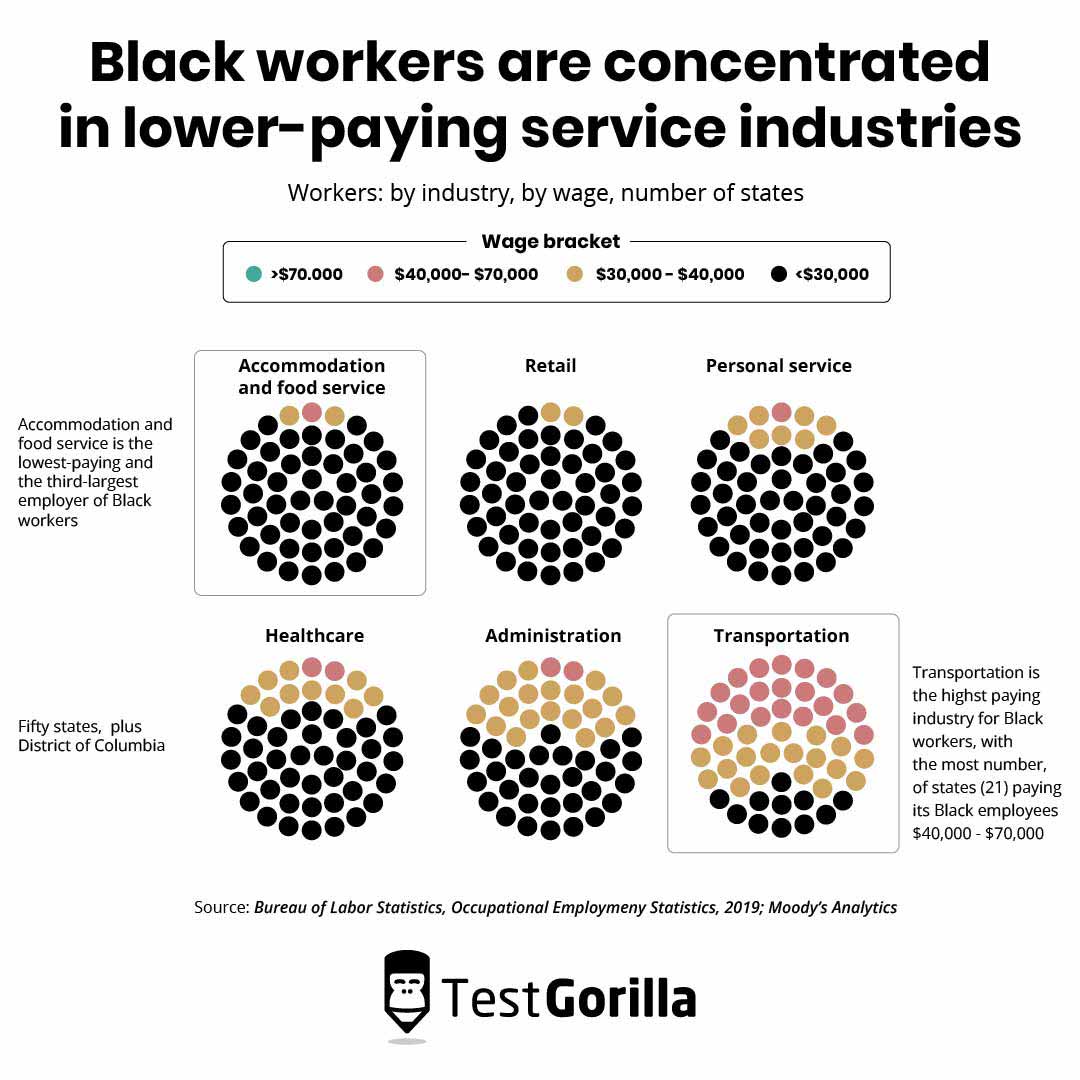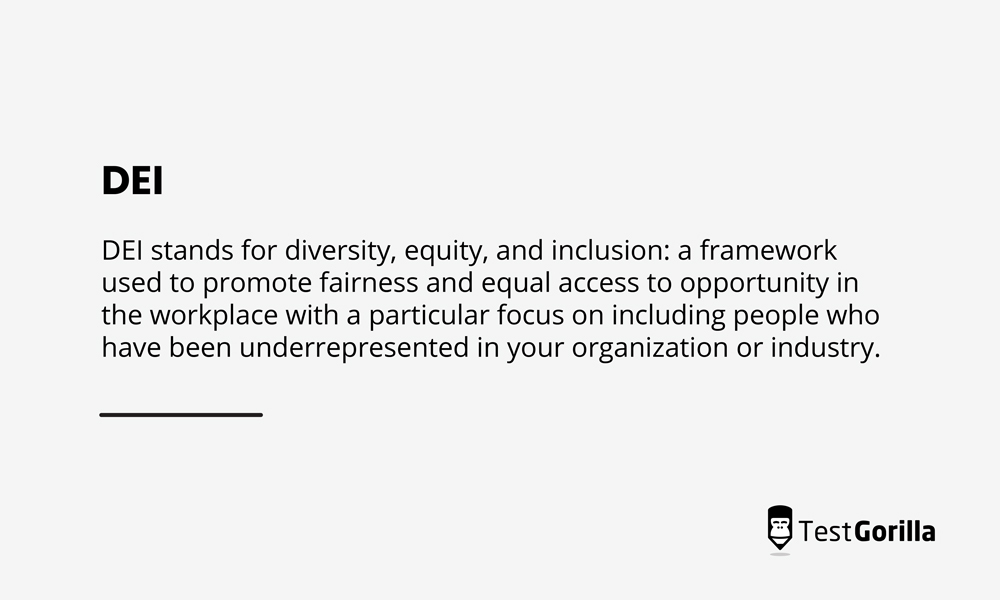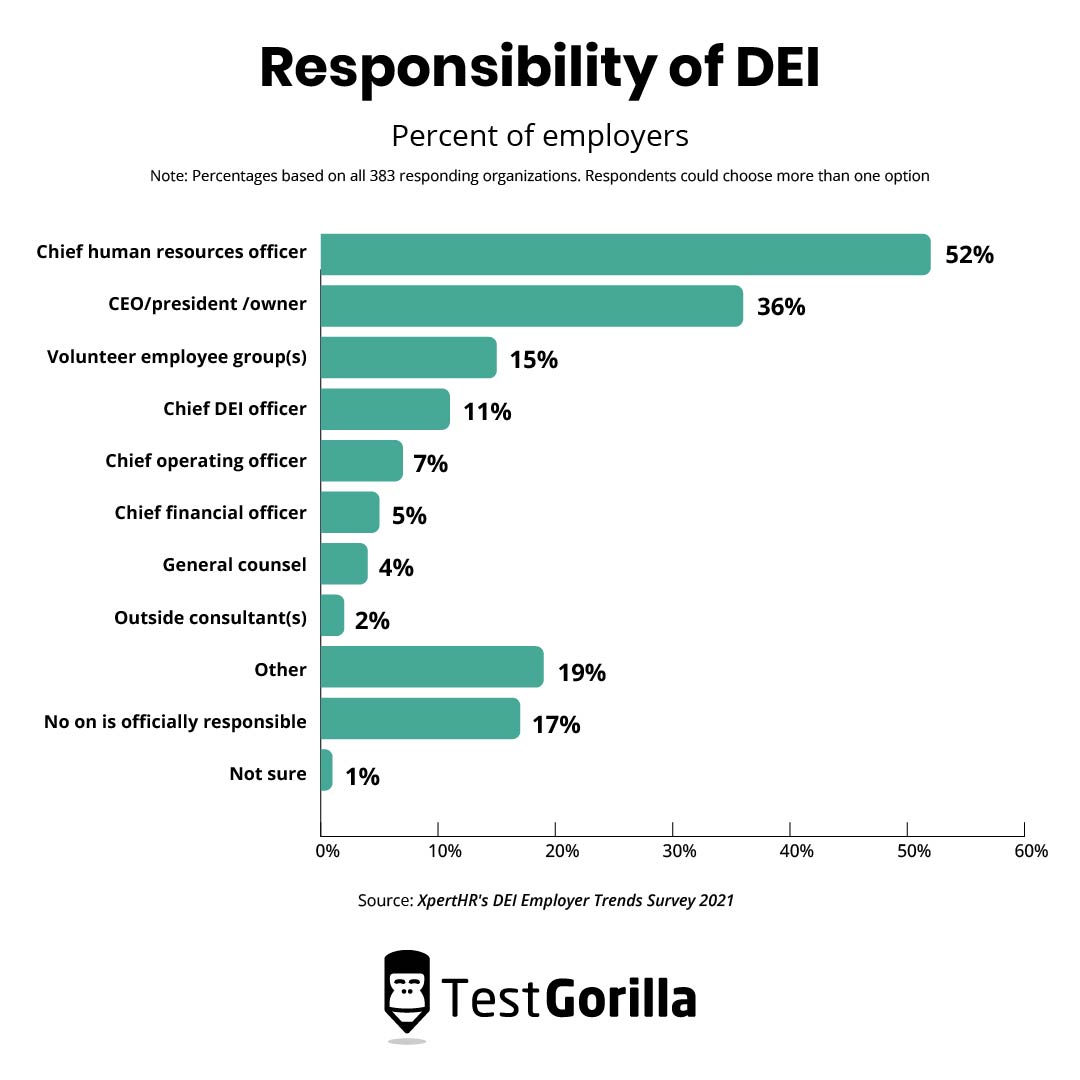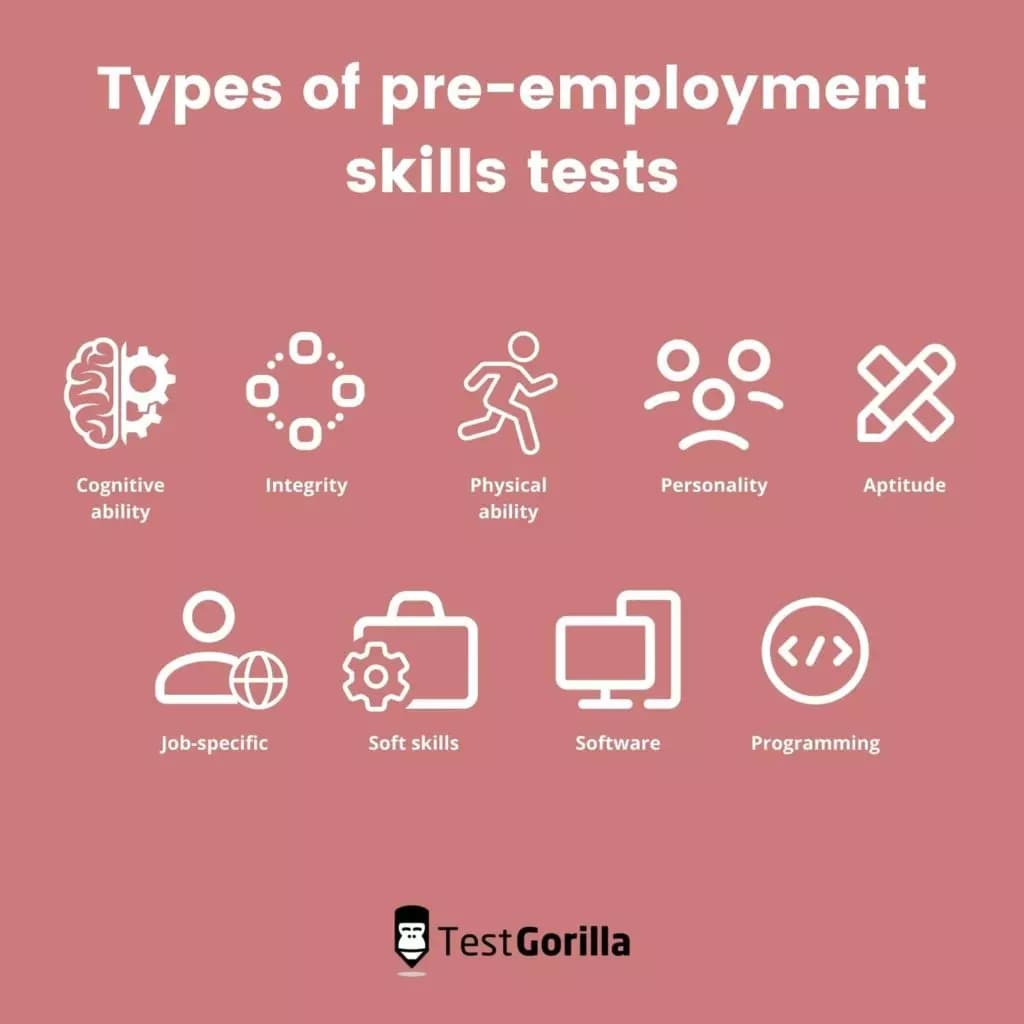Even in 2023, bias is still a big problem in hiring.
A recent study found that applicants with White-sounding names were 9% more likely than those with Black- or African American-sounding names to receive responses from employers, even when the employers had been sent the exact same applications.[1]
Robust diversity, equity, and inclusion initiatives (or DEI initiatives for short) can help combat this. But even though diverse companies reap rewards from better morale to increased profits, many organizations wait until DEI is in the news to do anything about it.
Don’t be one of those leaders.
In this blog, we talk you through how to promote DEI in the workplace, whether you’re hiring a data analyst or improving employee retention. We also give you several DEI initiative examples and a step-by-step process for implementing them.
Let’s get started.
What is DEI?
DEI stands for diversity, equity, and inclusion: a framework used to promote fairness and equal access to opportunity in the workplace with a particular focus on including people who have been underrepresented in your organization or industry.
Here’s an example of why DEI is important. A 2021 report by McKinsey found that Black workers are not equally represented in all industries but are instead concentrated in lower-paying service industries. Many DEI initiatives, therefore, actively work to reach Black candidates.
Alongside race, other characteristics that contribute to a diverse workforce include:
Gender
Disability status
Age
Ethnicity
Religion
Culture
Sexual orientation
Personal traits
You might also hear DEI referred to as EDI, with “equity” placed before diversity and inclusion.
This is because many organizations believe that by leading with diversity and inclusion, businesses focus on simply providing the same opportunities and resources to different groups without recognizing and catering to each of their unique needs. In doing so, they sidestep meaningful change.
Which term you use may depend on your company culture, but more on that in a moment.
However, this approach has recently been questioned with the Society for Human Resource Management (SHRM) announcing it’s dropping the “E” from its DE&I approach.
What are DEI initiatives?
DEI initiatives are the methods businesses use to improve equal access to opportunity in the workplace. These initiatives foster the overall DEI goals of ensuring that qualified individuals are not rejected from roles based on protected factors like race or gender.
We’ll run through specific strategies and examples below, but one example of a DEI initiative is blind hiring. Blind hiring redacts unnecessary information from candidates’ applications to reduce bias throughout the hiring process. This would eliminate the effect of bias posed by the candidate names that we mentioned earlier, for example.
The best insights on HR and recruitment, delivered to your inbox.
Biweekly updates. No spam. Unsubscribe any time.
Why is DEI important to organizations?
You’re likely already familiar with the business case for DEI initiatives, but it’s important, so forgive us while we go over it one more time.
Here are three benefits of DEI initiatives that any organization would love:
Access to larger talent pools and more effective recruitment
This one’s common sense. When you’re not discarding qualified candidates based on superficial characteristics like their names, you have a larger pool of applicants to choose from. You’re likely to have a greater diversity of thought within that pool, too.
Diversity of thought is not often included explicitly in DEI conversations, but it’s one of the most important aspects of a great DEI strategy. Research by Deloitte shows that diversity of thinking increases innovation by about 20%.
Better workplace culture and employee retention
Fostering a culture of inclusivity doesn’t only support a small minority of employees; an inclusive workplace, by definition, benefits everyone.
Research by Catalyst found that higher levels of gender diversity and the presence of HR policies focused on it are linked to lower employee turnover. It also showed that 50% to 69% of Canadians of color who anticipate bias in the workplace are planning to leave their jobs.
Increased profitability
This is one of the most compelling benefits you can present to senior stakeholders to convince them of the importance of DEI initiatives.
A McKinsey study showed that the relationship between diversity on executive teams and the likelihood of financial outperformance has strengthened over time.
In fact, the 2019 analysis showed that companies whose executive teams placed in the top quartile for gender diversity were 25% more likely to have above-average profitability than those in the bottom quartile. That’s a 10% increase from 2014!
How to promote DEI in the workplace: 6 initiatives
After that introduction, we wouldn’t blame you if you were desperate to get started with DEI initiatives.
Later, we’ll break down the process for implementing any DEI initiative. But first, let’s start with the broad strategies you can employ when thinking about which DEI initiatives are right for your business and some specific actions you can take.
Summary
In a rush and want to get started straight away? No worries – here’s a quick summary.
Tip for how to promote DEI in the workplace | Example actions |
Get buy-in from senior leadership | Appoint a head of people and culture to helm your DEI agenda; Get your chief executive officer on board to oversee DEI initiatives and role model inclusive practices |
Embed DEI into your company culture | Write DEI into your company value statement; Display this on your website’s “About Us” page and careers portal |
Reduce bias in your hiring process | Appoint diverse interviewers to hiring panels; Use a structured interview approach in which all panelists agree on a set of questions and evaluation criteria at the start of the hiring process; Remove unnecessary experience and qualification requirements from job descriptions – for instance, the need for a bachelor’s degree |
Invest in employee resource groups | Notify employees that they are allowed to form ERGs; Provide a designated space for discussion to happen, such as a Slack channel; Provide financial support, like money for socials; Offer personal support, such as help with mediating conflict |
Embrace mentoring opportunities | Assign all entry-level employees a higher-level mentor to discuss career progression with them; Implement a “reverse mentoring” program to make connections between staff at different levels of your organization |
Use inclusive language and processes | Encourage employees to put their pronouns in their email signatures; Embrace a flexible working schedule to accommodate caring responsibilities |
1. Get buy-in from senior leadership
We won’t sugarcoat it: Without the support of senior leadership, your DEI initiatives will be dead in the water.
Employees look to senior leaders to role model open and safe discussions in the workplace, and you’ll need their sign-off for any big initiatives.
In small businesses, this might be your chief executive officer; in growing organizations, you’ll need a dedicated member of the senior leadership team. In fact, 52% of companies look to their chief human resources officer to helm corporate inclusion efforts.
At TestGorilla, we just hired Nadia Vatalidis, Head of People and Culture, who will help us to build out our DEI agenda and related initiatives.
2. Embed DEI into your company culture
We get it – describing your company culture is hard, and writing an inspiring diversity and inclusion statement seems even harder.
But by embedding DEI into your company values, you show your employees and prospective hires that you mean business. There’s more than just a one-off event or letter when something happens in the news or your workplace.
You can easily make your company values and their relationship to DEI clear and accessible on your website. That means:
Putting them on your “About Us” and careers pages
Backing up your claims with specific initiatives you’re using to carry them out
Featuring employee testimonials or photographs as evidence that you’re walking the walk
This might sound like a lot, especially if you’re a small business, but take it from us that it’s achievable. In fact, our relatively small team and preference for flexibility in our processes actually help us to be more inclusive and attract diverse talent.
Here’s a snapshot of our careers portal to show you what we mean.
3. Reduce bias in your hiring practices
One of the easiest ways to reduce bias when hiring is by trading in the traditional resume requirements for a skills-based hiring approach.
With this method, you select candidates for roles based on objective data on how strong their skills are rather than what their resume says about their experience or education.
For example, did you know that adding a four-year degree requirement screens out 58% of White Americans, more than 70% of Black Americans, and 79% of Hispanic Americans?
One way to reduce bias is with pre-employment testing. This enables you to test candidates’ skills directly while eliminating unconscious bias based on prejudicial factors like:
Race
Gender
Education history
Employment history
You can evaluate candidates on almost anything using pre-employment testing, from Python coding to communication skills.
Other DEI initiatives you can use to reduce bias include:
Appointing diverse interviewers to hiring panels.
Using a structured interview approach in which all panelists agree on a set of questions and evaluation criteria at the start of the hiring process. (Top tip: Not only are structured interviews fairer, but Google found that they predict job performance with 26% accuracy.[2])
Removing unnecessary experience and qualification requirements from job descriptions. A great developer doesn’t necessarily need a university degree – they need great coding skills.
4. Invest in employee resource groups
Employee resource groups, or ERGs for short, are employee-led and executive-sponsored groups within your business that are available for employees to lean on each other for support. Common examples of resource groups include:
People of color
LGBTQ+
Veterans
Though it might be tempting to start appointing founding members right away, the volunteerism required for these kinds of groups means that your role should be that of a facilitator, not an initiator. Instead, you can:
Let employees know that they have the power to start an ERG
Support them with setup and administration, for example, by providing a space like a Slack channel where discussions can take place, a budget for events, or guidance when mediating conflict
Inform them of the process for making sure their feedback is heard by senior leadership
5. Embrace mentoring opportunities at all levels of business
DEI isn’t just about getting diverse candidates in the door: It’s about giving them equal opportunity to progress up the ladder.
The 2021 McKinsey study we cited above showed that although many companies have successfully hired Black professionals into entry-level and frontline roles, there is a sharp drop-off in representation at management levels.
This may be attributed to a lack of pathways to advancement for Black professionals and a lack of trust within organizations.
One of the best ways to combat both of these issues and promote internal mobility is through mentoring initiatives, which ensure that all candidates are offered opportunities for mentorship from senior leaders.
This isn’t just beneficial for entry-level employees: Initiatives like reverse mentoring, which facilitate professional connections between senior managers and employees throughout the organization, can help leaders stay in touch with employees’ real experiences at their company.
Internal mobility improves employee engagement, too. Employees who move into new jobs internally are more than three times as likely to be engaged than those who stay in their current roles.
6. Use inclusive language and processes
We know this sounds obvious, but inclusive language goes a long way.
At TestGorilla, we encourage employees to attach their pronouns to their Slack names and email signatures to foster an inclusive environment around gender identity, but we don’t stop there. As a remote organization with employees all over the world, we also work to be inclusive of:
Different time zones
Diverse religious and national holidays
Employees’ caring responsibilities
We even offer employees unlimited holidays to further cater to these needs. Trust us when we say that it’s worth it.
How to implement diversity, equity, and inclusion initiatives – with examples
Now that we’ve gone over the broad strategies you’ll need and some examples of initiatives you can use, let’s cover the process to use when setting up new DEI initiatives in your company.
Summary
Are you more of an “act now, read later” leader? We get it. Here are the key action points.
How to implement DEI initiatives | Example |
Use data to diagnose equity issues in your business | Conduct a “census” of your workplace to get an overview of racial and gender diversity |
Outline clear objectives and metrics for improvement | State the objective of improving equality of opportunity in your hiring process, for instance, a target of increasing applications from women by 10% |
Select a few focused initiatives to address objectives | Expand your social media recruiting strategy to advertise roles to more women |
Use “systems-focused language” when communicating about initiatives | Instead of saying, “Hiring managers are biased,” say, “Our hiring process doesn’t offer clear guidelines for assessing candidates, which leads to uneven hiring” |
Sustain momentum by affirming improvement and soliciting feedback | Shout out unique contributions that each new hire makes in company meetings to draw attention to diversity of thought |
1. Use data to diagnose equity issues in your organization
A data-driven approach is the best way to diagnose urgent DEI issues in your business and direct your first diversity initiatives. You might do this with:
A “census” of your workplace that involves looking at the presence and distribution of different categories of diversity
A report generated from your applicant tracking system to check the diversity of your applications
A skills-gap analysis that examines which teams have low diversity of skills
Example
A “census” of your workplace reveals that there is little race or gender diversity.
When you investigate your recent hiring practices, you see that hiring managers are more likely to interview and consequently hire candidates who belong to the same race or gender as them.
The hiring managers also evaluate every candidate qualitatively instead of with more empirical criteria such as test scores, making the thought process behind these decisions murkier.
2. Outline clear objectives and metrics for improvement
At TestGorilla, we believe that aiming for equality of opportunity is a better business objective than equality of outcome.
In other words, look at ways to take down the barriers in your process and even the playing field for candidates rather than approaching diversity as a box-ticking exercise.
Example
A key objective in the situation given above would be improving equality of opportunity in your hiring process.
For instance, if your investigations reveal that part of the problem is that you aren’t attracting diverse candidates, you might aim for a minimum 10% improvement in the number of women applying for roles.
3. Select a few focused initiatives to address these objectives
With these objectives and metrics in mind, design a few focused initiatives to tackle them, just as you would with any business strategy. That means:
Assigning responsibility for carrying out and monitoring the initiatives’ progress to relevant team members
Agreeing on how and where progress will be tracked and reported
Scheduling check-in points for progress reviews
Example
To achieve that 10% increase in women applicants mentioned above, you might expand your social media recruiting strategy to include advertising specifically to women or reach out to online networks that advertise roles to women-focused audiences (for instance, women in STEM).
To tackle bias once candidates are being evaluated, you could also:
Introduce pre-interview testing to screen candidates based on their skills
Train interviewers in structured interview techniques so that all candidates are evaluated on the same criteria
4. Use “systems-focused language” when communicating about DEI initiatives to your organization
One thing that many organizations worry about when implementing DEI initiatives is whether or not they’ll backfire.
It’s not just senior leaders who might resist but also marginalized professionals. In fact, when marginalized employees are presented with the so-called “business case for diversity,” they report a lower sense of belonging and less interest in joining the organization.
According to the DEI researcher Lily Zheng, one of the best ways to avoid this is by using “systems-focused” language to describe DEI initiatives instead of people-focused language.
People-first language puts the focus for change – and, to many employees, the blame for bias – on individuals. Systems-focused language focuses instead on how your organization can use formal processes to support employees as they improve DEI.
Let’s look at an example based on our chosen scenario.
Example
When it comes to tackling bias in hiring, it can be hard to communicate a new DEI initiative without:
Hiring managers thinking they’re being accused of serious prejudice
Making current employees feel they haven’t been hired based on their own merit
Here’s how you might handle these challenges in the above situation.
Framing that might cause backlash | Systems-focused framing |
1. “Hiring managers are being affected by unconscious bias in their recruitment choices. Therefore, we need to introduce bias training.”
2. “We are hiring too many [x/y/z]. Instead, we need to ensure people are being hired based on their skills.” | “Our hiring process doesn’t offer clear guidelines for evaluating candidates, which puts unnecessary strain on hiring managers. We need to implement additional support and resources for hiring panels, like pre-interview testing and structured interview processes.” |
5. Sustain momentum by affirming improvement and soliciting feedback
Finally, nothing screams “token gesture” like making your company’s DEI initiative a thankless task for everyone involved or “setting and forgetting” a process without seeking out ongoing feedback.
This is where a senior team member taking ownership of DEI initiatives definitely comes in handy. Not only does their praise bolster employee morale, but they can also dedicate the necessary time and expertise to designing, processing, and applying feedback.
Example
As you would when evaluating any employee’s job performance, you can affirm improvements in your hiring process by:
Recognizing when targets are hit or exceeded in all-company meetings
Shouting out the unique contributions that each new hire makes to their team to bring the benefits of workplace diversity to the foreground
Shining the spotlight on longer-term improvements you see as the company grows – for instance, increases in revenue since hiring diverse teams
Kick-start your DEI initiatives with unbiased pre-employment testing
Thanks to this guide, you now know:
What DEI initiatives are
Why they’re important to your business culture and bottom line
Strategies to promote DEI in the workplace
The process for setting up new DEI initiatives
Now, you can get out of your own way and start hiring a wide range of qualified candidates to boost innovation in your organization.
If you want to learn more about applying these concepts to your hiring process, read our ultimate guide to diversity and inclusion hiring.
If you’re way ahead of us and ready to get started with pre-employment testing, check out our Culture Add test to find candidates who share your values, regardless of their background or experience.
Source
Kline, Patrick; Rose, Evan K.; Walters, Christopher R. (November 2022). “Systemic Discrimination Among Large U.S. Employers”. The Quarterly Journal of Economics, 137(4), 1963-2036. https://doi.org/10.1093/qje/qjac024
Bock, Laszlo. (April 7, 2015). “Here’s Google’s Secret to Hiring the Best People”. Wired. Retrieved December 14, 2022. https://www.wired.com/2015/04/hire-like-google/
You've scrolled this far
Why not try TestGorilla for free, and see what happens when you put skills first.




















